Phone Hours
Monday–Friday 8:30am–8pm EST
Saturday 8am–3pm EST
Sunday Closed
A complete "Woodipedia" of lumber terms for experts & amateur woodworkers alike.

| Woodipedia Index | |||||||||||||||||||||||||
| A | B | C | D | E | F | G | H | I | J | K | L | M | N | O | P | Q | R | S | T | U | V | W | X | Y | Z |
| Lumber Glossary Term | Definition |
| A-Frame | Two wooden or metal uprights mounted in the shape of the letter “A” to support lead blocks at the upper end. |
| Above-ground Biomass | The above ground portion of a tree, excluding the root system. |
| Abney Level | Hand-held clinometers that are used to measure slope in percent. |
| Abrasives | A material that is used to shape or finish a work piece through rubbing which leads to the work piece being worn away. |
| Absolute Humidity | The weight of water vapor per unit of air; usually expressed as grains/cu. ft. |
| Absorption | The gain of free water by the cell cavities. |
| Access | The means of gaining entry to timber on a tract or logging chance. |
| Accumulating Sheer | Shearhead on a feller-buncher that is capable of accumulating and holding two or more cut stems. |
| Across The Grain | Generally perpendicular to the grain direction. |
| Actual Dimensions | The exact measurements of a piece of lumber. (i.e. – a 2x4 (nominal dimensions) is actually 1 ½ inches thick by 3 ½ inches wide.) |
| AD (Air-Dried) | Lumber which has been air dried. |
| ADF | A term used to define a condition upon which payment of an invoice may be made. |
| ADI | After date of Invoice. |
| Adherent | A material that is held to another material by an adhesive. |
| Adhesion | A substance in which two surfaces are held together by inter-facial forces, which may consist of valence forces or interlocking action or both. |
| Adhesive | A substance capable of bonding material together by surface attachment.
|
| Admiralty Shackle | A heavy shackle at the tail end of the tree that connects the skyline to the sub line (guy line extension). |
| Adult Wood | Wood produced after cambial cells have attained maximum dimensions. |
| Advanced Decay | An older stage of decay readily recognized as wood that has become punky, soft, spongy, stringy, rinkshaked, pitted, or crumbly. |
| Adverse Grade | In highway transport, uphill haul that requires trucks to use lower gears; a gradient that slopes upward in the direction of loaded log truck travel. |
| Aerial Logging | Yarding system employing aerial lift of logs, such as balloons or helicopters. |
| Afforestation | Establishment of forest crops through artificial methods, such as planting or sowing on land where trees have never grown. |
| African Blackwood |

|
| African Mahogany |
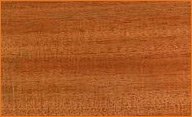
|
| African Padauk |
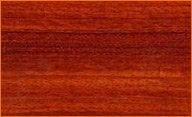
|
| African Walnut |
|
| After Date of Invoice | A term used to define a condition of sale; cash discounts are often allowed for payment within a specified period "after date of invoice." |
| After Deducting Freight | A term used to define a condition upon with payment of an invoice may be made. |
| Against The Grain | A reference to the cutting direction; as in planing a board surface, such that splitting ahead of the cutter follows the grain direction downward into the wood below the projected cutting surface. Also, generally perpendicular to the grain direction, across the grain. |
| Age | Mean age of the trees comprising a crop, forest, or stand. In forests, the mean age of dominant (and sometimes co-dominant) trees is taken. The plantation age is generally taken from the year the plantation was begun without adding the age of the nursery stock. |
| Age Class | One of the intervals, commonly 10 or 20 years, into which the age range of tree crops is divided for classification or use. Also pertains to the trees included in such an interval. (i.e. trees ranging in age from 21 to 40 years fall into a 30-year ago class; 30 designates the midpoint of the 20-year interval from 21 to 40 years.) |
| Air Cleaner (Air Polisher) | A machine designed to filter fine dust from the air in a workshop. A blower moves air past a series of filters to capture the airborne dust. |
| Air Compressor | A compressor that takes in air at atmospheric pressure and delivers it as a higher pressure. |
| Air-Dried Lumber | Lumber that was dried, usually outside, to equilibrium moisture content with the air it was exposed to. Any lumber below 30% MC is classified as air dried. Construction grade is around 19% MC. Moisture content of air-dried wood fiber depends on length of drying period, relative humidity, and temperature. It’s also referred to as air seasoned. |
| Air Hose | A hose that carries air under pressure. |
| Alder |
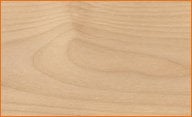
|
| All-Aged | Forest or stand containing trees of almost all age classes up to and including trees of harvestable age. |
| All Widths and Lengths | A term used indicating that all widths and lengths of a specified thickness of lumber may be included in a shipment. |
| Allen Head | A screw head with a recess requiring a hexagon shaped key, used mainly on machinery. These may be in metric or SAE sizes. |
| Allowable Cut | Volume of timber that may be harvested during a given period of time to maintain sustained production. |
| Allowable-Cut Effect (A.C.E) | Allocation of anticipated future forest timber yields to the present allowable cut; this is employed to increase current harvest levels, especially when constrained by even flow by spreading anticipated future growth over all the years in the rotation. |
| Allowable Property | The value of a property normally published for design used. Allowable properties are identified with grade descriptions and standards, reflect the orthotropic structure of wood, and anticipate certain end uses. |
| Along the Grain | Generally paralleled to the grain direction. |
| Alternate | An alternating set of teeth on a saw blade with a left-right sequence. |
| Alternate Top Bevel with Raker (ATB/R) | A design for a circular saw blade where four alternately beveled teeth are followed by a raker tooth to remove debris from the cut. |
| Ambrosia Maple |
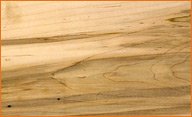
|
| American Lumber Standard | The American Softwood Lumber Standards establishes standard sizes and requirements for the development and coordination of lumber grades of various species, the assignment of design values when called for, and the preparation of grading rules applicable to each species. |
| American Tree Farm System (ATFS) | A program of the American Forest Foundations Center for Family Forests is the oldest of forest certification programs and was established in 1941. The ATFS focuses its program on private family forest landowners in the United States. |
| Anchor | Piece of equipment that holds something in place. i.e. – a clamp is a type of anchor. |
| Anchor Cable | A line used to tie down a yarded to prevent tipping on heavy pull. |
| Anchor Log | Concrete, metal or wooden bars buried in the earth to hold a guy rope. This is also called a deadman. |
| Andiroba |
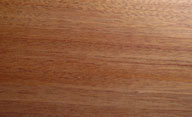
|
| Aniegre |

|
| Anisotropic | Shows different properties when measured along a different axes. |
| Annual Allowable Harvest | Quantity of timber scheduled to be removed from a particular management unit in one year. |
| Annual Growth Rings | The layer of growth that a tree puts on in one year. The annual growth rings can be seen in the end grain of lumber. |
| Applied Carving | A background which is worked separately and then applied, rather than being worked in place. |
| Apron | A frame around the base of a table to which the top and legs are fastened. |
| Arbor | A shaft, driven by the tools motor that turns blades or other cutting tools. |
| Arch | Supporting device mounted on or towed behind or a skidding vehicle. This is used to lift one end of a log(s) to reduce sliding resistance and/or transfer the weight. |
| Area Regulation | Method of controlling the annual or periodic acreage harvested from a forest, despite fluctuations in fiber-yield volumes. This leads to a managed forest. |
| Area Salvage | Timber sales in which the USDA Forest Service sells dead timber within a given area. Usually covers more than an operating season and requires the operator to return annually to remove any dead timber present. |
| Ash |
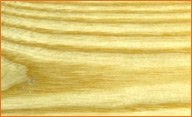
|
| Assembly Time | The time elapsed between spreading adhesive on surfaces to be joined and application of pressure to the joint. Open assembly time is from the beginning of spreading to joint closure. Closed assembly time is from joint closure to application of full pressure. |
| Attached Deck | A deck with one or more sides supported by a ledger and attached to a house. |
| Association of American Railroads (AAR) | A trade association based in Washington, D.C. representing the nations Class I Railroads. The AAR represents the industry in the broad fields of Law, Public Affairs, Legislation, Economics and Finance, Research and Testing, Transportation, Safety, Engineering, Freight Claim and Prevention and Car service. |
| Auger | Various hand tools, typically that have a threaded shank and cross handle, used for boring holes in ice or wood. |
| Australian Cypress |
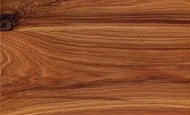
|
| Awl | A pointed instrument that looks like an ice pick, useful for marking positions when laying out a project. |
| AWLS | A term used indicating that all widths and lengths of a specified thickness of lumber may be included in a shipment. |
| AW&L | A term used indicating that "all widths and lengths" of a specified thickness of lumber may be included in a shipment. |
| Woodipedia Index | |||||||||||||||||||||||||
| A | B | C | D | E | F | G | H | I | J | K | L | M | N | O | P | Q | R | S | T | U | V | W | X | Y | Z |
